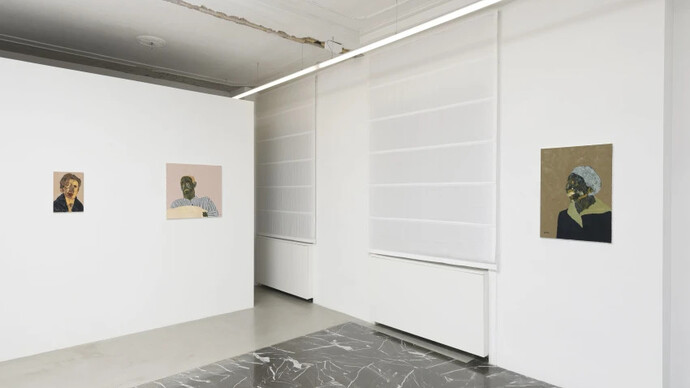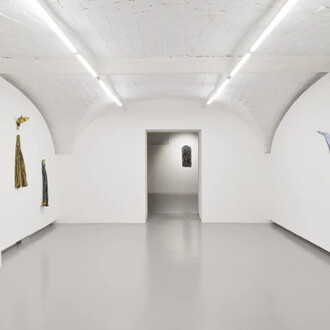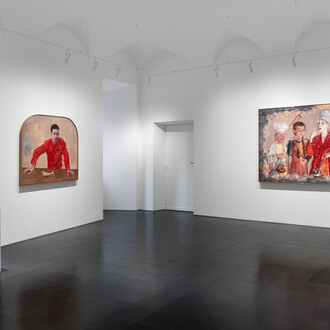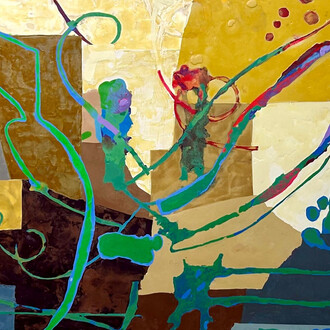z2o Project is pleased to present L'appuntamento, the first solo exhibition by Josefina Ayllón (Argentina, 1973) at the gallery’s space in Via Baccio Pontelli 16.
As much as I love its interpreter, the title of this exhibition has nothing to do with Ornella Vanoni's song of the same name: it derives from an idea that came to me one night, while I was trying to summarise Josefina Ayllón's work in a few words, in the brevity of a catchy phrase.
It is never easy to trace an artistic career, especially when there are no canonical biographical references that can be easily identified: academic training (preferably abroad), a series of institutional and gallery exhibitions, and various awards and recognitions.
Josefina is a self-taught artist whose career has been in film and theatre. Since childhood, she has shown no interest in drawing. However, in her studio, the number of canvases organised on the shelves bears witness to constant practice, a daily exercise that seems to span an entire lifetime.
And indeed, her production spans approximately twenty years: one might say it is a perpetual preparation (which is, after all, the foundation of the exercise), metaphorically likened to an appointment.
Although it should not be seen as a milestone or, worse still, the crowning achievement of a career, this exhibition is in fact a meeting point: between the public and Ayllón's work, between the faces that make up the former and those depicted on the canvases, between different series and techniques. Experimentation with the latter and, more generally, with pictorial material, is at the heart of each work and, in this sense, the human figure, although omnipresent, appears almost as a pretext for arranging colour on the support and imagining its content.
Although they sometimes suggest representative types associated with specific pictorial genres, the subjects are mainly selected for their formal and chromatic potential. This is the case, for example, of the figure with raised hands, rendered in dark green and with a beard which, evoking similar Old Testament iconography, is actually used as an element of contrast with the rest of the composition. Or the cloaked figure, a “Camusian” portrait, covered by a heavy coat whose lapel breaks the unity of a livid face, crossed by white veins.
There is no psychological need for this extreme characterisation: on the contrary, it is interest in a profile, a forehead furrowed with wrinkles, a hairstyle or even a posture that determines the selection of the image and, consequently, the creation of the painting.
The same plastic-formal approach resonates, and finds a sort of justification, in the relationship that the artist establishes with colour and its materiality. Applied with a brush or by hand, the latter is treated as if it were clay: it creates reliefs, in some ways replacing the shadows normally rendered through chiaroscuro. It is no coincidence that Ayllón arrived at the second technique only after understanding the limitations of the first. With the brush, contact is mediated, the amalgam is unstable, pasty and undefined; with the fingers, on the other hand, form is drawn away from indeterminacy through rapid and decisive movement.
Two speeds seem to underlie his practice: a reflective attitude, almost shy and impersonal, and an instinctive, vital one.
The complete absence of autobiographical references in the subjects and their characterisation does not prevent his involvement in more concrete terms: the artist's body, equivalent to the body of the painting, joins the relational dynamic that always links the work, its creator and the public, and secretly participates in the exhibition.
(Text by Giulia Gaibisso)
















